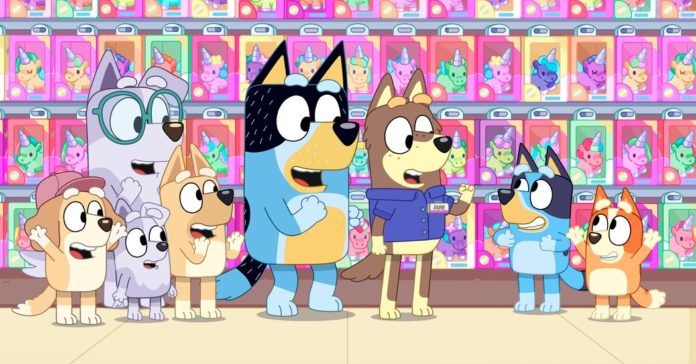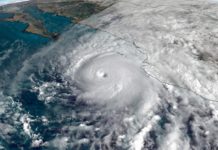The Australia Letter is a weekly newsletter from our Australia bureau. Sign up to get it by email. This week’s issue is written by Natasha Frost, a reporter with the Australia bureau.
On one of my earliest visits to Australia, as a small child in the 1990s, I couldn’t believe the extraordinary wealth of kids’ programming on terrestrial television. (We were not a cable family, and had strict limits on “screen time” at home.)
While our parents snoozed and the cicadas chirped outside, my siblings and I closed the shutters and parked ourselves in front of the box. For hour after hour (or so it seemed), we drank in distinctively Australian programs such as “Play School,” a show somewhere between Britain’s “Blue Peter” and the PBS classic “Sesame Street,” albeit without puppets. “Bananas in Pajamas,” a program about a pair of wacky six-foot-tall banana twins, was another favorite. (We were a bit young for “Heartbreak High,” the Australian teen drama rebooted for Netflix this year.)
“Bananas in Pajamas” was never quite as popular in the United States as it was back home. But other Australian hits have had astonishing success elsewhere in the world. “Skippy,” the 1960s program about a “bush kangaroo,” was broadcast throughout the Commonwealth, while the all-singing, all-strumming quartet of “The Wiggles” gave new meaning to “kid rock.”
And now there is “Bluey.” The series, about a family of the Australian cattle dogs known as “Blue Heelers,” topped Nielsen’s streaming charts in August; Disney, to feed its audience’s yawning demand, even plans to “unban” an episode from its streaming platform that it had previously nixed over jokes about flatulence.
Children’s television in Australia punches far above its weight. The best of it is quirky and sometimes irreverent; it’s intelligent without being preachy and thoughtful without being sentimental. “Bluey,” for instance, takes its scoring seriously, drawing on serious classical sources for inspiration: Tchaikovsky; “Carmen”; even Gustav Holst’s “The Planets.”
Shows have a well-established record of providing representation where it matters: The British show “Peppa Pig” may have made headlines recently for featuring a family with two mothers, but “Play School” did it in 2004. Later this year, “Bluey” will have its first Deaf character, who speaks in sign language. And the Emmy-winning series “First Day,” which first aired in 2020, stars a transgender actor playing a transgender high school student in Sydney.
In some cases, shows simply couldn’t happen outside of Australia: “MaveriX,” about young motocross riders in the Northern Territory, has a largely Aboriginal cast and is co-produced by Trisha Morton-Thomas, an Indigenous Australian woman from the state in which it is filmed. The show’s global rights were last year acquired by Netflix, and it is now available around the world.
What has made Australian television for children so good? For decades, Australia’s commercial free-to-air TV networks were required to air hundreds of hours of children’s programs each year, much of which was made within Australia. The quotas date from the 1980s, when Tony Morphett, a celebrated Australian screenwriter who died in 2018, lobbied for greater funding and strict quotes for Australian-made programs and films.
Writing in the 1989 annual report of the Australian Children’s Television Foundation, Morphett made an impassioned case for Australian-made programs in which Australian actors could tell Australian stories in Australian accents. He dreamed of a “multicultural” world “where we can have our own cultures, and at the same time enjoy the richness and diversity of hundreds of others,” he wrote.
Three decades later, the future of children’s television in Australia is far from assured.
Those quotas were abandoned last year by the Morrison government, and have already led to a reduction in how much locally produced children’s television is being made in Australia. Commercial spending on children’s television productions fell from 25 million Australian dollars, or about $16 million, in the financial year ending 2019 to 3.6 million Australian dollars, or $2.2 million, in the financial year ending last year.
The ABC, the government-sponsored state broadcaster, once aimed to have 50 percent of its children’s programs made in Australia. As of 2017, that had fallen to around 25 percent. It does not have formal obligation to make or show children’s television in its charter.
Why does all this matter? Perhaps Morphett put it best. It might make more economic sense for all English-language programming to be made in Los Angeles, but that would come at a different cost, he said: “This century began with our ceasing to be a colony. It could end with our becoming a colony again, this time a cultural one.”
And the warmth with which global audiences have embraced Australian shows — of “Bluey,” of “Round the Twist,” even “The Wiggles” — speaks to an appetite that stretches far beyond Australia’s borders.
Now for the week’s stories.
Are you enjoying our Australia bureau dispatches?
Tell us what you think at NYTAustralia@nytimes.com.
Like this email?
Forward it to your friends (they could use a little fresh perspective, right?) and let them know they can sign up here.
Source : Nytimes













